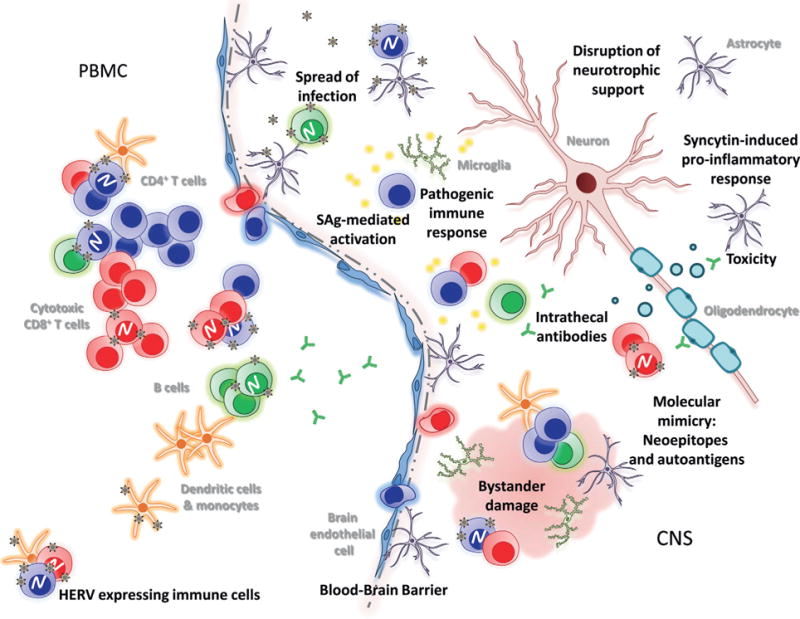Fig. 22.3.

Potential human endogenous retrovirus (HERV)-mediated neurotoxicity in the central nervous system (CNS). HERV activation occurs both in the immune cell compartment of peripheral blood mononuclear cells (PBMC) and in the CNS. PBMC from patients with multiple sclerosis are known to produce infectious HERV-derived retroviral particles. Trafficking of HERV-shedding PBMC across the blood–brain barrier may infect cells of the CNS. Conversely, HERV reactivation may occur in CNS cells and impair their ability to perform neurotrophic support and promote proinflammatory responses. Recruitment of T cells, B cells, and myeloid cells into the CNS may elicit pathologic inflammatory and cytotoxic responses upon recognition of HERV antigens. HERV-encoded envelope superantigens (SAg) may further boost glial cell and T-cell activation, resulting in excessive tissue damage. (Courtesy of R. Douville.)
